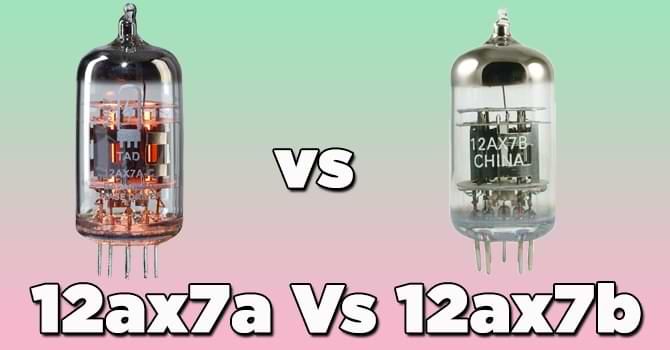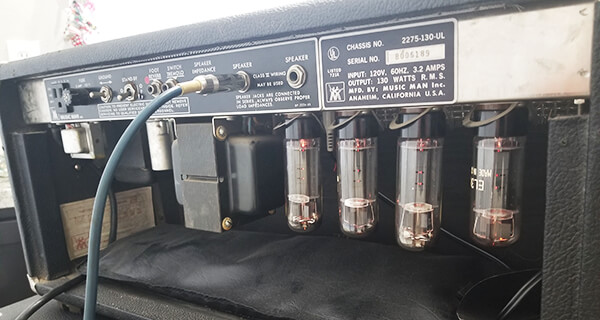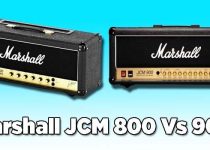12ax7a Vs 12ax7b [Difference & Which is Better Amp Tube]
In the realm of audio amplification and signal processing, vacuum tubes have remained an essential component, delivering warmth, character, and that unmistakable analog charm. Among the myriad of vacuum tubes available, the 12AX7 series has solidified its place as a staple in the industry, cherished for its versatility and distinct tonal qualities.

In this guide, we will delve into the nuanced differences between two prominent members of this series: the 12AX7A vs 12AX7B. By exploring their unique characteristics, construction, performance, and applications, we aim to help you make an informed decision about which tube best suits your specific audio requirements.
# Table of Contents =>
Comparison Table:
| Features – | 12AX7A | 12AX7B |
|---|---|---|
| Tube Type | Dual Triode | Dual Triode |
| Designation | ECC83 | ECC83 |
| Filament Voltage | 6.3 V | 6.3 V |
| Heater Current | 300 mA | 300 mA |
| Max Plate Voltage | 300 V | 330 V |
| Amplification Factor (Mu) | 100 | 100 |
| Gain Range | High | High |
| Internal Construction | Standard glass envelope | Standard glass envelope |
| Application | Audio amplification, instrument amplifiers | Audio amplification, instrument amplifiers |
| Sound Character | Warm, relatively smooth | Similar to 12AX7A, may have subtle differences |
| Availability | Widely available | Commonly available |
Overview of 12AX7A:
The 12AX7A, also known by its European equivalent ECC83, is a miniature dual-triode vacuum tube that has earned its place as a beloved classic. The 12AX7A boasts remarkable versatility, delivering consistent and well-rounded performance across a diverse range of applications, spanning from guitar amplifiers to audio preamp circuits.
What truly drives the 12AX7A’s widespread appeal is its distinctive tonal character, characterized by its inviting warmth and seamless smoothness. This unique sonic signature positions it as the favored selection not only for audiophiles but also for guitarists and recording studios. Which is creating a harmonious blend of sound that resonates across a wide spectrum of musical contexts.
This tube boasts a gain factor (mu) of approximately 100, making it a quintessential voltage amplifier in preamp stages. Its harmonic richness and low noise emission contribute to its effectiveness in audio signal processing, producing a sound that is both pleasing and natural. The 12AX7A’s enduring lifespan and widespread availability further cement its position in the industry. This is ensuring its integration into both vintage gear and modern setups.
Overview of 12AX7B:
The 12AX7B emerges as an evolution of its predecessor, the 12AX7A, catering to the demands of contemporary audio production. As technology progresses, the 12AX7B combines the cherished qualities of the original with enhancements that address specific limitations. This newer iteration remains loyal to the core sound while accommodating the needs of modern musicians and sound engineers.
Notable improvements in the 12AX7B extend to its construction and durability. The tube is meticulously designed to withstand the challenges of modern music environments. Employing advanced manufacturing techniques and superior materials, the 12AX7B offers heightened durability compared to the 12AX7A. That is ensuring its resilience during transportation, setup, and rigorous performances.
Main Differences between 12AX7A Vs 12AX7B:
a) Construction and Durability:
The construction and durability of vacuum tubes play a crucial role in their performance and longevity. The 12AX7B takes a step forward in this aspect by incorporating improved construction techniques and materials. While the 12AX7A is already known for its robust design, the 12AX7B goes further in enhancing its durability to meet the demands of modern music production and live performances.
The 12AX7B’s improved construction translates to increased resistance to mechanical stress and thermal variations. This is particularly advantageous for touring musicians and professionals who frequently transport and set up their equipment. The sturdier build of the 12AX7B ensures that the tube can withstand the rigors of being on the road without compromising its performance.
b) Low Noise Performance:

Noise is a constant concern in audio circuits, especially when dealing with high-gain applications. The 12AX7B addresses this concern by incorporating refinements that lead to even lower noise performance compared to the 12AX7A. The reduction in noise is a result of improved manufacturing processes and material selection.
For musicians and recording engineers aiming for pristine and noise-free audio signals, the 12AX7B’s lower noise performance is a significant advantage. It ensures that the tube contributes minimal additional noise to the audio chain, allowing for cleaner recordings, clearer amplification, and greater control over the tonal nuances.
c) Dynamic Range:

The dynamic range of a vacuum tube refers to its ability to handle a wide range of input signal levels while maintaining tonal integrity. A larger dynamic range translates to a more responsive and expressive tonal output. In comparison to its forerunner, the 12AX7A, the 12AX7B proudly exhibits an enriched dynamic range.
This augmentation holds particular significance for musicians seeking adaptability in their playing approaches. The increased dynamic range of the 12AX7B allows for greater expression in both clean and distorted tones. It ensures that the tube responds accurately to variations in picking intensity, providing a nuanced and dynamic playing experience.
d) Price and Availability:
As technology evolves, newer iterations of vacuum tubes often come with updated designs and improved features. This can impact their pricing and availability in the market. The 12AX7B, being a more recent version, might be priced slightly higher than the 12AX7A due to its enhanced construction and performance characteristics.
Additionally, availability can be a factor to consider. As manufacturing processes shift towards newer models, the 12AX7B might become more readily available in comparison to the 12AX7A. Musicians and enthusiasts looking to replace tubes in the future might find it easier to source the 12AX7B due to its newer status.
Which Tube is Better for You?
Deciding which tube suits you best relies on your specific preferences, creative aspirations, and technical requirements. Consider the following questions to aid in arriving at a well-informed decision:
What’s Your Musical Style?
Are you drawn to vintage warmth and character, or do you prefer a more modern, precise tonal palette?
What’s Your Application?
Are you primarily recording in a controlled studio environment, performing live on stage, or a combination of both?
Do You Value Tradition or Innovation?
Are you looking to recreate classic sounds, or do you want to explore new sonic possibilities?
How Important is Durability?
Will your equipment be subject to frequent transportation, setup, and breakdown, or will it remain stationary?
What’s Your Budget?
Consider the price difference between the tubes and whether the benefits of the 12AX7B justify the slightly higher cost.
Availability and Longevity:
Are you concerned about long-term availability? The 12AX7B might have the advantage here due to being a more recent iteration.
Conclusion:
In the dynamic debate of 12AX7A vs 12AX7B, there’s no definitive answer as to which tube is objectively better. Each tube represents a unique combination of heritage, design, and performance, catering to different preferences and applications. The choice ultimately comes down to understanding your needs, musical style, and the sonic characteristics you value the most.
The 12AX7A carries the torch of vintage charm and authenticity. If you’re drawn to the warm, rich tones of yesteryear, if you cherish the history and character of classic gear. And if you seek to infuse your music with a sense of nostalgia, then the 12AX7A is likely the tube for you. Its timeless appeal, harmonic content, and historical significance make it a favorite among vintage gear enthusiasts and those looking to capture the essence of classic recordings.
On the flip side, the 12AX7B stands as a testament to progress and evolution. If you’re a modern musician, a sound engineer aiming for utmost precision, or a performer needing a robust and roadworthy tube, the 12AX7B may align more with your requirements. A perfect companion for contemporary music productions, live shows, and studio work, it is durable, reduces noise, and has a wide dynamic range. This is where reliability and performance are paramount.
Last Updated on September 10, 2023 by Perry Garner


